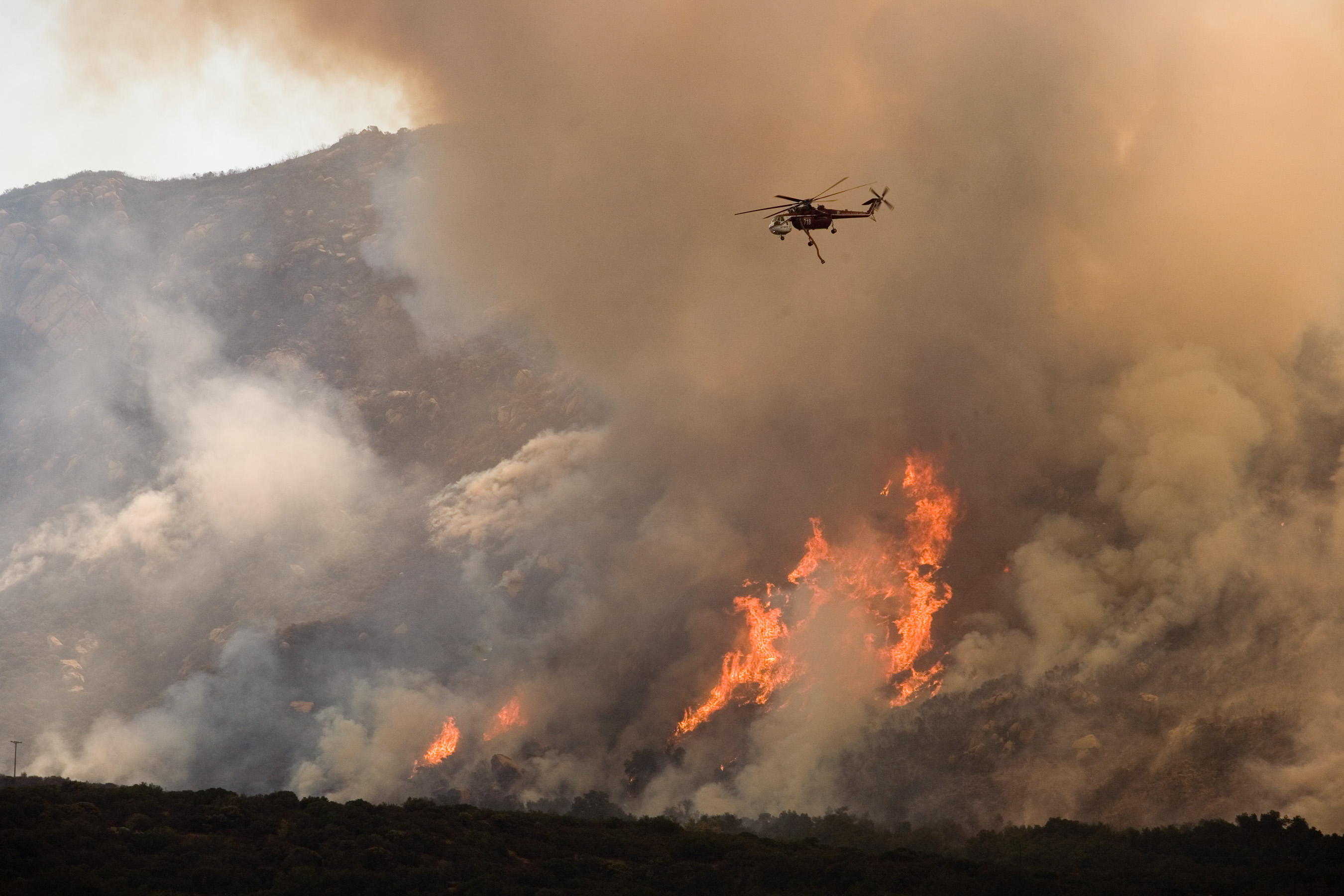Southern California is aghast that cities are now enforcing water usage cutbacks during the ongoing drought - it's because during the mandatory restrictions, while the farming regions of central California have met their targets, water usage in southern California actually went up.
They may not know something that most people in California realize - California is a desert and its water comes from dams and rivers north of them in California, and in Colorado. Rather than being a green paradise, California was mostly sparsely-inhabited desert prior to European colonization - its history has been drought and fire, the boom and bust of nature that gives and takes away.

Even before the recent drought, in just June and July of 2008,
there were almost 2,000 wildfires in northern California alone.
The history of California is a history of fire. Credit: UC Davis
Some fires are larger today than in the recent past - that is due to environmental restrictions on forest management, logging and even clearing brush - but nothing like occurred in the distant past. As a force of destruction and renewal, fire has a long and intimate history with the ecology of California and that will be discussed in detail at the upcoming 99th Annual Meeting of the Ecological Society of America on August 10 – 15th, 2014.
Jon Keeley, an ecologist with the U.S. Geological Survey's Western Ecological Research Center, will present research on the "association of megafires and extreme droughts in California" at the Annual Meeting as part of a symposium on understanding and adapting to extreme weather and climate events.
He will synthesize his research on the history of wildfire across the entire state, contrasting historical versus contemporary and forested versus non-forested patterns of wildfire incidence. He and his colleagues reviewed Forest Service records dating to 1910, as well as a wealth of newspaper clippings, compiled by a Works Progress Administration archival project, that stretch back to the middle of the last century.
Understanding historical fire trends, Keeley said, means recognizing that when we talk about wildfire in California we are talking about two very different fire regimes in two different ecosystems: the mountain forests and the lower elevation chaparral, oak woodlands, and grasslands.
The chaparral shrublands of southern California, and similar sagebrush ecosystems in the Great Basin, are not adapted to the kind of frequent fire typical of the mountain conifer forests in California. Fires in the lower elevation ecosystems are always crown fires, which kill most of the vegetation. In the millennia before humans arrived, these ecosystems burned at intervals of 100 to 130 years.
These lower elevation ecosystems experienced unprecedented fire frequency in the last century, with fire returning to the same area every 10 to 20 years, altering the ecology of the landscape.
"In Southern California, lower elevation ecosystems have burned more frequently than ever before. I think it's partly climate, but also people starting fires during bad conditions," Keeley said. Bad conditions include extended droughts and dry fall days when the Santa Ana winds blow through the canyons.
In high elevation conifer forests, spring temperatures and drought are strongly correlated with fire, and Keeley thinks climate change and management choices are likely playing a role in current trends. But in the hotter, drier valleys and foothills cloaked in grass, oak, and chaparral, human behavior dominates. Through arson or accident, in southern California, over 95% of fires are started by people, according to Cal Fire.
"Climate change is certainly important on some landscapes. But at lower elevation, we should not be thinking just about climate change," said Keeley. "We should be thinking about all global change." Land use change and population growth create more opportunities for fires to start.
The high frequency of fire has instigated a persistent switch from chaparral to grass in some areas. Frequent fire favors quick germination and spread of forbs and grasses. Most grasslands in California are not native.
Since the more recent arrival of immigrants from Europe and Asia, several of the exotic grasses they brought with them from the Old World have been quick to capitalize on the opportunities presented by fires to spread invasively throughout roughly a quarter of chaparral country. To Keeley, this means that prescribed fires in lower elevation ecosystems now have entirely different consequences for the regional ecology than they did when native Californian peoples set fires to manipulate resources.
"When the Native Americans did it, they did not affect native species so much, because native perennial bunchgrass and other herbaceous species grew in," said Keeley. "Once the aliens got here, it completely changed."





Comments